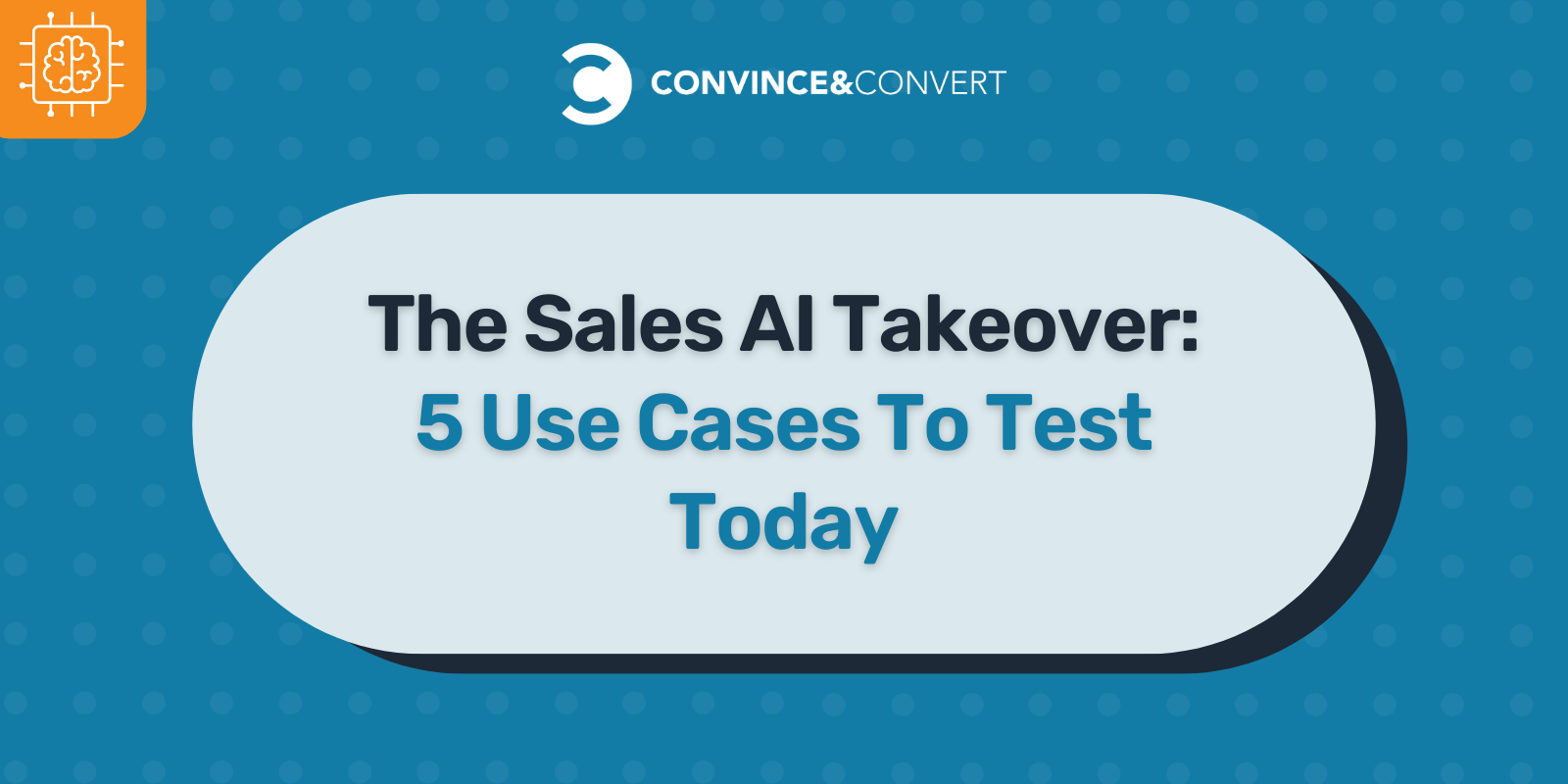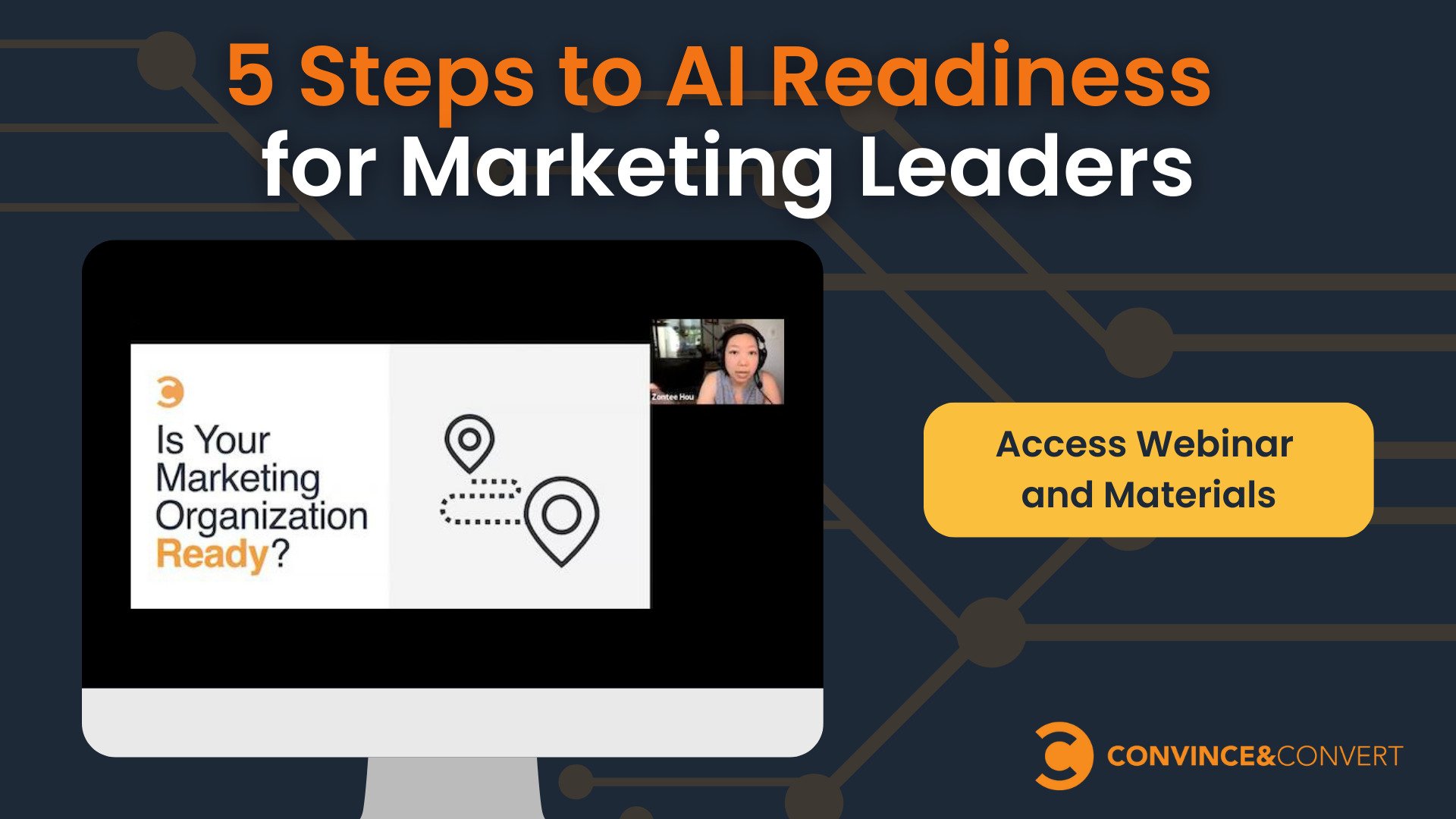
As we watch AI eat the world, as a business it’s easy to get overwhelmed and feel stuck about which opportunities you should integrate first.
That pressure to move fast and test things is even more critical for sales-centered organizations.
The sales process and toolset has been impacted more heavily than almost any other business unit. AI has become a key ingredient to the modern sales strategy.
Today, we’re not just scratching the surface of AI in sales; we’re diving headfirst into its transformative potential. We’re talking about a shift from intuition-based decisions to data-driven strategies.
This is not a call to hand everything over to the algorithms. We’re not there yet. We may never be. No one wants even more robots sending slightly-better cold emails to them every day.
Humans will always be important to the sales process. We do, however, want fewer guessing games in your process and more precision targeting. And you better believe the SaaS world is building some pretty shiny machines to help you finetune your sales strategies.
Ultimately, you want to augment your human intelligence resources, not replace them.
Uses for Sales AI You Need to Consider
My goal with this list is to give you a checklist of the sales AI use cases to test. To test what works for you and best integrates into your sales and marketing strategies.
One last note: Every major sales platform is integrating content personalization, automated responses, lead intelligence, and predictive analytics. All the big solution providers (Salesforce, HubSpot, Demandbase, etc), and a few new ones, are working to build the all-in-one Sales AI solutions. But, no one is there yet.
Focusing on use cases first is more helpful to your overall strategy. Look to the opportunities that best fit your organization, current pain points, and capabilities.
Let’s dive in.
1. Lead Data Enrichment
“We need more leads.”
“We need better leads.”
Every part of the lead generation process is getting plugged into AI solutions. Sourcing lead data, qualifying it, and confirming that data is vital for every sales prospecting team.
Take a look at your lead data process and look for the gaps. Are you gathering enough leads? Are you verifying that data quickly and successfully? Are you augmenting and updating lead info easily?
Solutions in this group are working to stand out by providing the largest data set, the most up-to-date data,
This process ensures that your sales team has accurate and comprehensive data, crucial for personalized outreach and effective lead nurturing.
Tools to Consider:
- ZoomInfo: Historic leader, adding multiple AI tools, human-powered verification
- Clearbit: First HubSpot-native lead data; lead scoring, routing, and buyer intent
- Apollo: New AI sales leader, large database and broader sales engagement tools
- Seamless AI: Real-time search of verified cell phones, emails, and direct dials
2. Conversational Marketing
Conversational toolsets are set up perfectly for AI augmentation. Many of the organizations that use these sales and support chatbots on their websites have existing databases of support questions and answers.
These tools also easily hand off to human engagement options in real-time or asynchronous.
These tools also offer huge user experience improvement capabilities incredibly quickly, reducing user frustration, unanswered questions, and improving lead qualification.
This group of tools does the best job of bringing a human touch to digital interactions, transforming bad support and sales chatbots from one-way broadcasts without context to two-way dialogues with insights and understanding.
As you evaluate your customer and prospect user flow, ask yourself: Are we truly engaging with our customers, or just responding to them?
I’ll share two caveats. First, as with all AI tools, the devil is in the data. If you do not have a clean source of customer or prospect common queries, you need that first. And second, not all of these tools are created equal. Test them thoroughly before rolling out to a public facing implementation.

Tools to Consider:
- Drift: Automate conversations, insights, and recommendations
- Intercom: Resolve questions instantly and increase efficiency
3. Meeting Intelligence
Who doesn’t love to hate meetings? Meeting creep is real, but sales calls and prospect meetings are more relevant than ever.
The sales call has always been more art than science, but AI tools are looking to up the data side of these conversations.
This group of tools is focusing on mining your meetings insights, summarizing conversations, suggesting action items, and providing real-time feedback. Meeting intelligence AI doesn’t just record; it interprets, suggesting action items, and turning casual mentions into solid leads.
Interpreting moods, language, and missed opportunities.
Every sales call is more data. And AI tools excel at capturing and better understanding that data.

Credit: Meetgeek
Tools to Consider:
- Meetgeek: Record, transcribe, summarize, and share granular insights from every meeting to any tool
- Colibri.ai: Real-time conversation intelligence, live cue cards
- Fathom: Records, transcribes, highlights, and summarizes meetings with actionable insights
- Trellus: Personalized coaching during cold calls
- Zoom: Summarize meetings, chat summaries, chat catch-up, generative replies
4. Personalized Videos
Personalized videos are not used by every business development team, but even before AI, this was a growing category.
It’s a way to stand out from typical cold emails and unwanted DMs. This use case is not about mass-produced content; it’s about trying to scale that personal touch.
The difference between sending a prospect a video that mentions their name, company, or specific needs vs videos with no personalization is night and day. AI tools are also making this type of messaging less clunky. The tools are getting much better at personalization that actually feels personal.
These solutions can help you capture attention, deliver tailored messages, and enhance customer relationships.

Credit: Sendspark
Tools to Consider:
- Sendspark: Custom intros, personalized thumbnails, calendar booking
- Bhuman: Digital avatar clones, detailed video customization, 6k app integrations
- Tavus: Detailed video customization, facial cloning, lip sync, unique voice variables
5. Email Deliverability
Ultimately, I’m sure we’re all headed to beaming our thoughts to each other. However, email is still the workhorse of most sales teams. Making sure those emails get through is incredibly important and increasingly challenging.
Luckily, email deliverability AI tools are popping up with new solutions to these challenges.

Credit: Warmbox
Tools to Consider:
- Warmbox: Warming up email accounts to enhance deliverability rates
- Zeta Email: Personalized emails per user
- Phrasee: Human-sounding subject lines, brand-compliant, custom to each user
- Optimail: Monitors individual contact behavior for hyper-personalization
- 7th Sense: Optimizes email timing and frequency per user
How Will You Use Sales AI?
These sales AI use cases represent a shift in how sales strategies are formed and executed. AI is not about replacing the human element; it’s about enhancing it, making your sales efforts more effective, more personal, and ultimately, more successful.

